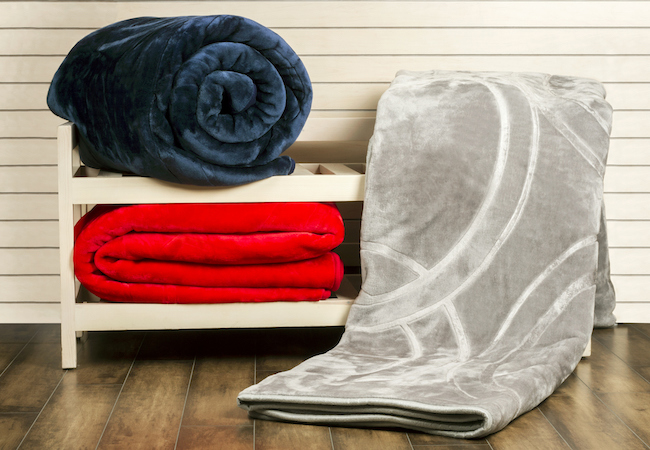We may earn revenue from the products available on this page and participate in affiliate programs. Learn More ›
Your washing machine can handle most of your dirty laundry, but there are times that call for doing the job by hand. Some very delicate fabrics, such as silk or sheer synthetics, won’t withstand the rigors of a machine wash. Garments made of viscose, rayon, or nylon—sometimes the label will say polyamide—generally require hand-washing to avoid excessive shrinkage.
Clothing items decorated with sewn-on trim, including sequins, delicate lace, leather, feathers, fur, or fringe usually need to be washed by hand; trim can come off, fray, or loosen in the washing machine. Also, you will want to hand-wash clothes dyed by hand, such as tie-dye and batik garments, or colorful fabrics you don’t want to fade to avoid excessive loss of color. Protect your delicate and favorite clothing items with these steps for how to hand-wash clothes.
Tools & Materials
Bobvila.com may earn a commission from purchases made through these links.
BEFORE YOU BEGIN
Before washing any garment for the first time, always check the care label. Note that often, you can hand-wash clothes safely even though they might say dry cleaning preferred, provided the items are made of natural fibers, such as silk, wool, or linen. However, if the care tag specifies dry clean only, or the garment is made of velvet, taffeta, rayon, suede, or leather, or is filled with down, it’s best to leave it to the professionals. This also goes for clothes that have pleats or are highly tailored, such as a jacket, lined dress, or suit.
STEP 1: Separate garments by fabric, color, or size.
If you are hand-washing several garments, consider whether you’ll need to wash each on its own or if you can combine them safely in the sink or tub. Wash anything dyed a bright or dark color by itself to avoid color bleeding onto other fabrics. Tackle wool or similar heavy fabrics such as denim separately from delicate silk or sheer synthetics. And while it generally is OK to hand-wash several small garments, such as lingerie, together in the same tub, it’s best to hand-wash larger clothing individually. An overly full tub prevents the sudsy water from soaking through all areas of the fabric.
STEP 2: Pretreat stains.
If you have a garment with a stain, the first step before actually washing it is to treat the offending mark with a laundry stain remover. There are plenty from which to choose; one that generally is effective and safe is OxiClean Max Force Gel Stain Remover Stick (available on Amazon). It’s always best to test any stain remover first in an inconspicuous place. Once OK, let the treated garment sit for at least 5 minutes to give the stain remover time to work its magic.

STEP 3: Choose your washbasin.
When washing only a couple of pieces of lingerie, a bathroom sink might be large enough, but larger loads will take the kitchen sink or bathtub for a thorough wash. For optimum cleanliness, there needs to be enough room for the clothing to swish and swirl freely through the water, so choose the washbasin accordingly. Whatever basin you choose, it should be clean and free from food residue, soap scum, or other grunge.
STEP 4: Fill the basin and add detergent.
Fill the washbasin with cool-to-lukewarm water. You’ll want enough water to completely submerge all of the fabric, yet not so much that water sloshes all over the floor once you start swishing and swirling.
As the water fills the basin, add laundry detergent. Use a cleanser specifically formulated for hand-washing, such as The Laundress Delicate Wash (available on Amazon), or use gentle—not concentrated or extra-strength—dishwashing liquid or hand soap. As a general rule, add 1 teaspoon of detergent for every pound of laundry, which translates to around three adult-size garments. Swirl your hand through the water to mix the detergent thoroughly.
RELATED: How to Make Your Own Laundry Detergent
STEP 5: Soak your laundry.
Now it’s time to get down to business: Add the dirty laundry to the tub, and swirl and knead the fabric until it’s completely submerged and soaked through. Pump your hands up and down and gently swirl the clothing from side to side, but don’t be too rough; avoid excessive pulling or stretching. Now, let the load sit and soak for up to 30 minutes.
STEP 6: Time to rinse.
Drain the water from the sink or tub, and then refill with cool water. Use your hands to knead the clothing for a minute or so, and then drain the sink, refill again with cool water, and repeat the process. Depending on the fabric thickness and the size of the garment, it might take several repetitions of the rinse step before all of the laundry detergent is gone from the fabric. Give the clothing one final rinse in cool, clean water.

STEP 7: Squeeze water away.
Once all of the detergent and suds are gone, push and squeeze down on the fabric to remove as much water as possible. Don’t twist, pull, or wring the wet fabric, though, since this can tear delicate material.
RELATED: 9 Smart Hacks for Laundry Day

STEP 8: Dry clothing appropriately, depending on the fabric.
Now it’s time to let the hand-washed garments dry. Hang lightweight clothing, such as lingerie, as well as sturdy woven fabrics like cotton dress shirts, on a clothesline, drying rack, or hanger, giving each garment a few shakes to remove wrinkles.
Heavy clothing, such as denim, or knitted garments like sweaters should lay flat to dry, both to speed up the process and to avoid stretching or sagging. If you don’t have a clothes-drying rack already, the Honey-Can-Do Gullwing Drying Rack (available on Amazon) has plenty of room and options for drying an entire hand-washed load and folds up after use.
Whether you need to know how to hand-wash clothes to prevent shrinking, damage, or fading, or just want to avoid going to the laundromat, following the easy steps outlined above will leave your garments clean and fresh. Before getting started, be sure to check the care tag in each item of clothing you plan on washing, and choose a washbasin large enough to fully submerge and swish all of the fabric without crowding the load or splashing water onto the floor.
























